Upwards movement was expected. I can now calculate a target for the alternate bear wave count.
Summary: Any movement above 2,019.26 would invalidate the main bear wave count and confirm the alternate. At that stage the target of upwards movement would be 2,044. The bull wave count would expect upwards movement is most likely over, but only movement below 1,991.40 would confirm this.
Click on charts to enlarge.
Bearish Wave Count
The weekly charts show how to draw the double aqua blue trend lines. The lower trend line began back in 2011 has repeatedly been tested and is reasonably shallow which is highly technically significant. It has now been breached by more than 3% of market value indicating a trend change.
Because there is such a close Fibonacci ratio between intermediate waves (3) and (1) and intermediate wave (3) lasted 455 days, I am confident this labeling is correct. Also, intermediate wave (3) has the strongest upwards momentum within primary wave C. Therefore, the only piece of this wave count of which I am not confident is the structure within intermediate wave (5). Is it complete or not? This is why I have an alternate bearish wave count for you.
There is technical divergence between price and MACD at the weekly and daily chart levels. This indicates a trend change, but it does not indicate what degree the trend change should be.
For the first time in five years the lower edge of the maroon – – – channel about cycle wave b (or x) was breached. This is significant.
The bear wave count sees a huge super cycle wave (II) incomplete as either an expanded flat correction, a combination, or a double flat.
To have full confidence in this bearish wave count, and to discard the bullish wave count, I want to see three things happen:
1. A clear five down on the daily chart, with completion of intermediate wave (1).
2. Confirmation from NASDAQ with a new swing low for that market below 3,414,11.
3. A new low below 1,370.58 (although using structure as a guide the bull wave count would probably be discarded well before this point).
When we have those three things I will have full confidence in this wave count at cycle and super cycle degree, at the monthly chart level.
This wave count differs from the alternate bear count below in the labeling of the subdivisions within intermediate wave (5). Here, there is no Fibonacci ratio between minor waves 3 and 1, and minor wave 5 is 0.89 points longer than 0.146 the length of minor wave 3. Minor wave 2 is a single zigzag lasting 14 days, and minor wave 4 is a double combination lasting 7 days.
This wave count sees intermediate wave (1) as a leading diagonal because within it minor wave 1 down subdivides best as a three wave zigzag. However, it is also possible to see minor wave 1 on the hourly chart as a five wave impulse. This movement is a little ambiguous. When minor wave 4 arrives its depth will determine which structure intermediate wave (1) is: an overlap into minor wave 1 price territory will indicate a diagonal and no overlap will indicate an impulse. When minor wave 4 arrives I will have these two alternate structures on separate charts. For now I will keep the number of charts manageable.
Upwards movement continued but passed the target at 2,012. Minute wave c is not unfolding as an ending diagonal because the fourth wave did not overlap back into first wave price territory. Minute wave c is a simple impulse.
Ratios within minute wave c are: minuette wave (iii) has no Fibonacci ratio to minuette wave (i), and if minuette wave (v) is over here it is 0.60 points short of 0.236 the length of minuette wave (i).
If this wave count is correct then there is almost no room left for more upwards movement. Second waves can be very deep, only movement above 2,019.26 would invalidate this main bear wave count and confirm the alternate below.
Alternate Bearish Wave Count
This idea works for both bull and bear wave counts.
I am confident that I have the labeling of intermediate waves (3) and (4) correct. Intermediate wave (3) lasted 455 days and is just 0.76 short of 2.618 the length of intermediate wave (1). Intermediate wave (3) has the strongest upwards momentum within primary wave C.
With this wave count minor wave 3 is 14.29 points longer than 1.618 the length of minor wave 1. Minor wave 2 is an expanded flat lasting 39 days and minor wave 4 is a zigzag lasting 18 days, and the proportions between minor waves 2 and 4 are better.
The problem within this wave count is at the end of minor wave 3: within it minute wave v looks like a three wave structure and not a five because minuette waves (ii) and (iv) are grossly disproportionate. There is another problem with this wave count: a clear breach of the lower edge of the maroon channel is most likely an indication that there has been a trend change prior, not that there is a trend change to come.
Because there is a Fibonacci ratio between minor waves 3 and 1 I would not expect to see a Fibonacci ratio for minor wave 5 to either of 3 or 1. If minor wave 5 only reached equality with minor wave 1 it would be truncated. Minor wave 5 is most likely to make a new high above minor wave 3 at 2,019.26, but it does not have to. It only needs to subdivide as a five wave structure.
This alternate wave count would be confirmed with a new high above 2,019.26. This wave count expects two or three more days of upwards movement to a slight new high, before a trend change is likely. I would expect minor wave 5 to be relatively short and brief, only a little longer than minor wave 1.
If price moves above 2,019.26 on Monday this is the bear wave count I would use.
This wave count expects minor wave 5 to be relatively short and brief.
Within minor wave 5 at 2,044 minuette wave (v) would reach equality in length with minuette wave (i).
It looks like this best fit channel is showing where downwards corrections are finding support. It may continue to do so.
Within the final fifth wave up minuette wave (iv) may not move into minuette wave (i) price territory below 1,991.40. For all wave counts movement below this point, whether it comes before or after new highs, would provide price confirmation of a trend change. At that stage downwards movement could not be a fourth wave correction within the final fifth wave upwards, and so the final fifth wave upwards would have to be over.
Bullish Wave Count
This bullish wave count differs from the bearish wave count at the monthly chart level and at super cycle wave degree. To see the historic picture go here.
Upwards movement for intermediate wave (X) has now reached 1,999.40 and so the minimum requirement of 90% for a B wave of a flat correction is now met. Primary wave 4 may be unfolding as a triangle, flat or combination. All these structures would see it show alternation with the zigzag of primary wave 2.
Primary wave 2 was a 41% zigzag correction. I would expect primary wave 4 to be shallow. It may end within the price territory of the fourth wave of one lesser degree, below 1,730 and above 1,646.
Primary wave 2 lasted a Fibonacci 13 weeks. Zigzags tend to be more brief structures. I would expect primary wave 4 to last at least 13 weeks, and it may last up to a Fibonacci 21 weeks. Combinations and triangles particularly both tend to be more time consuming structures than zigzags. This would give it a 1.618 duration to primary wave 2. So far primary wave 4 is only in its sixth week, so this wave count would reasonably expect it to continue for at least another seven weeks.
It is too early to label primary wave 4 as over because it has lasted only 4 weeks and would be a zigzag so have no structural alternation with the zigzag of primary wave 2.
At this stage I am now more confident in my degree of labelling within primary wave 4. It fits nicely if the first two intermediate degree waves are now complete.
The upwards zigzag is here labeled in exactly the same way as the upwards zigzag for the main bear hourly wave count. The ratios and targets are the same.
For this bull wave count there is no upper invalidation point. Expanded flats, running triangles and combinations may all have new price extremes beyond the start of the first wave within the correction.
This analysis is published about 08:52 p.m. EST.


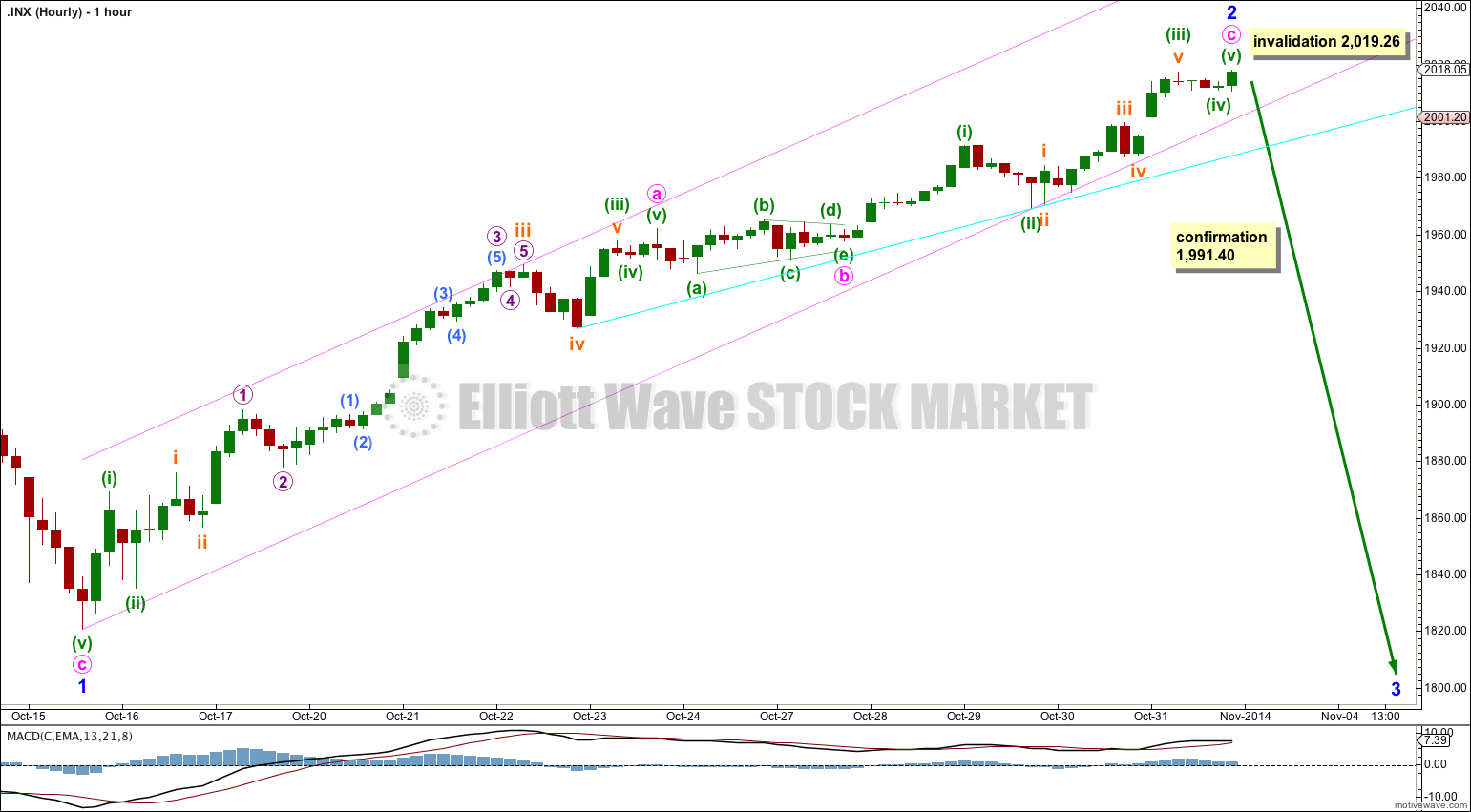
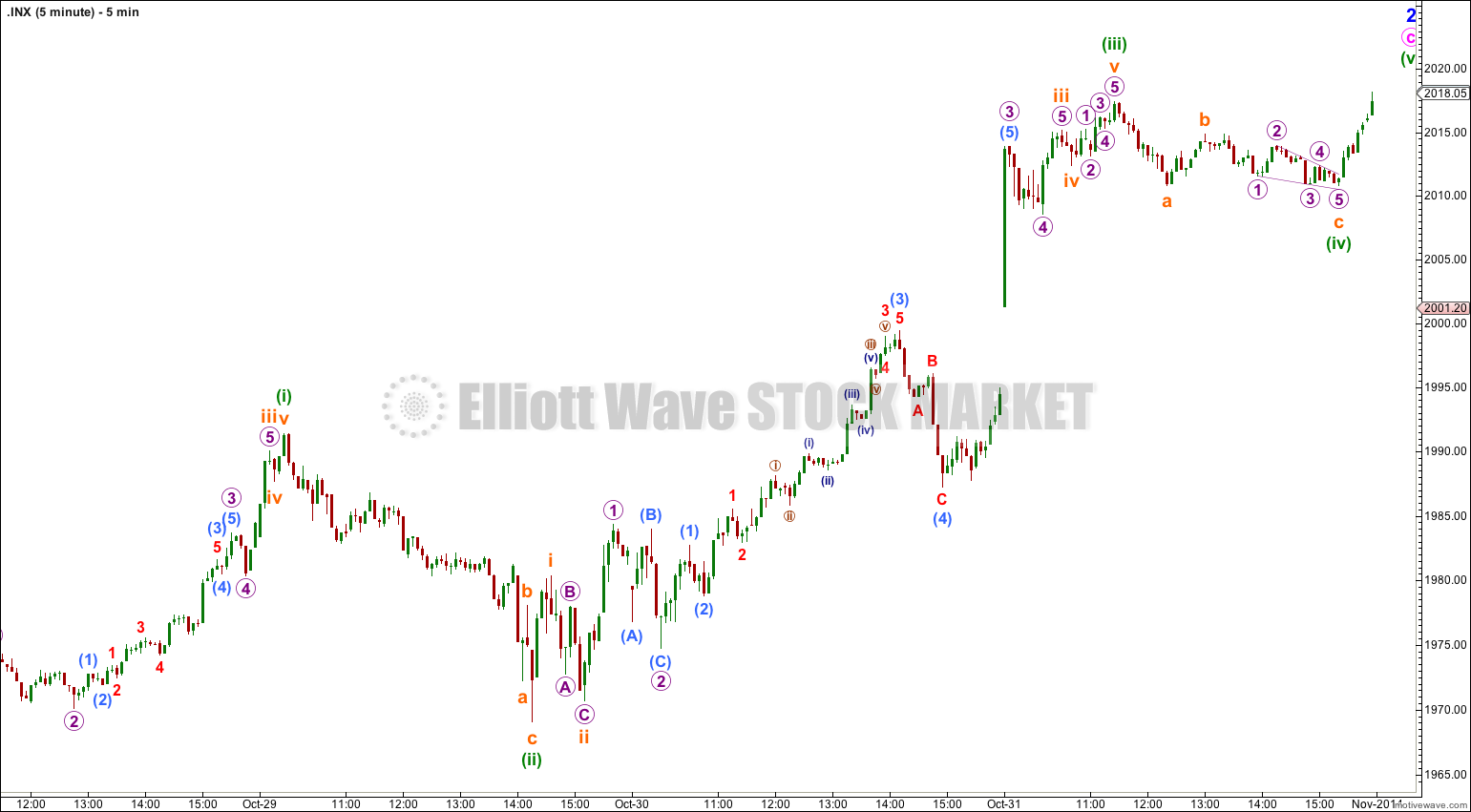
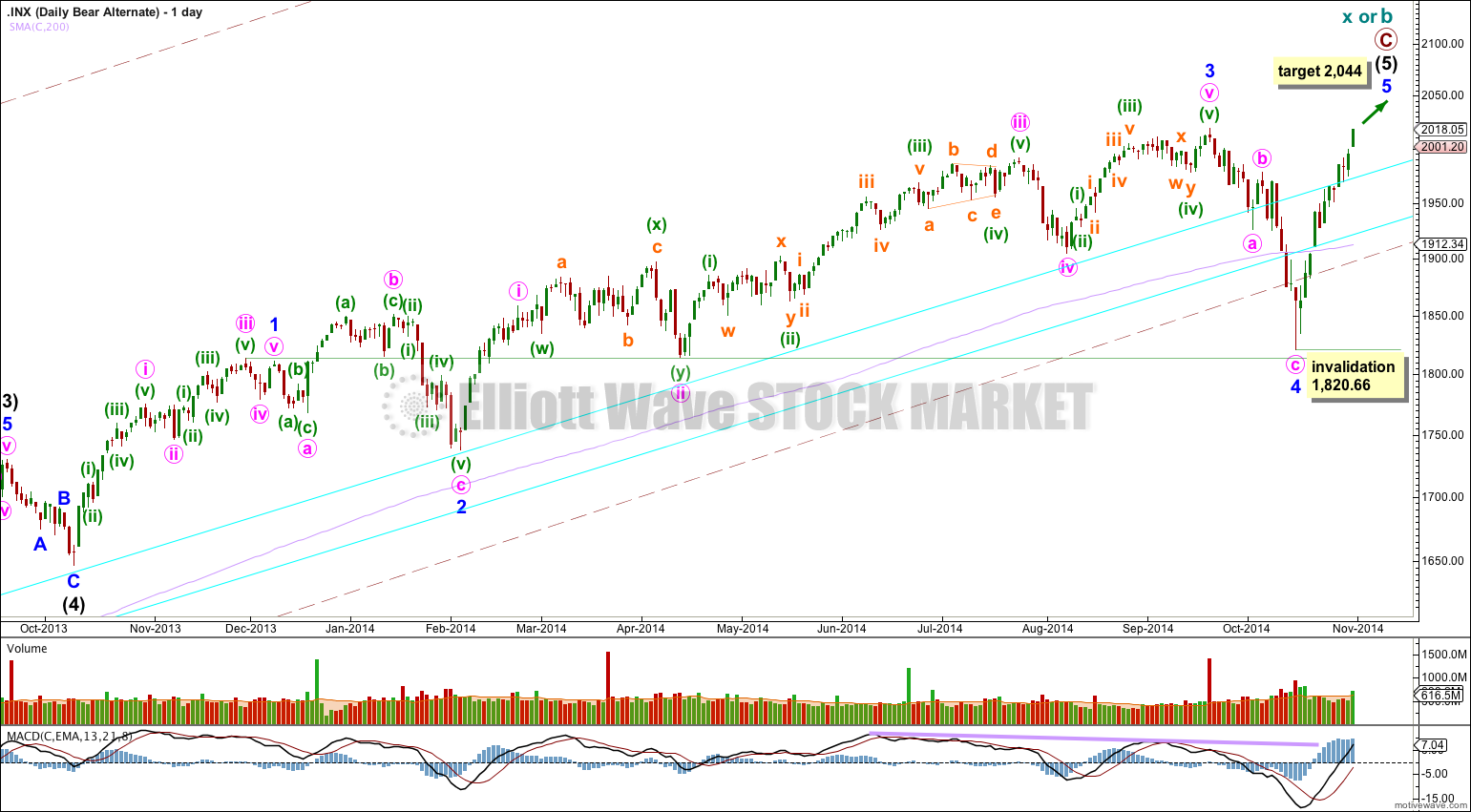
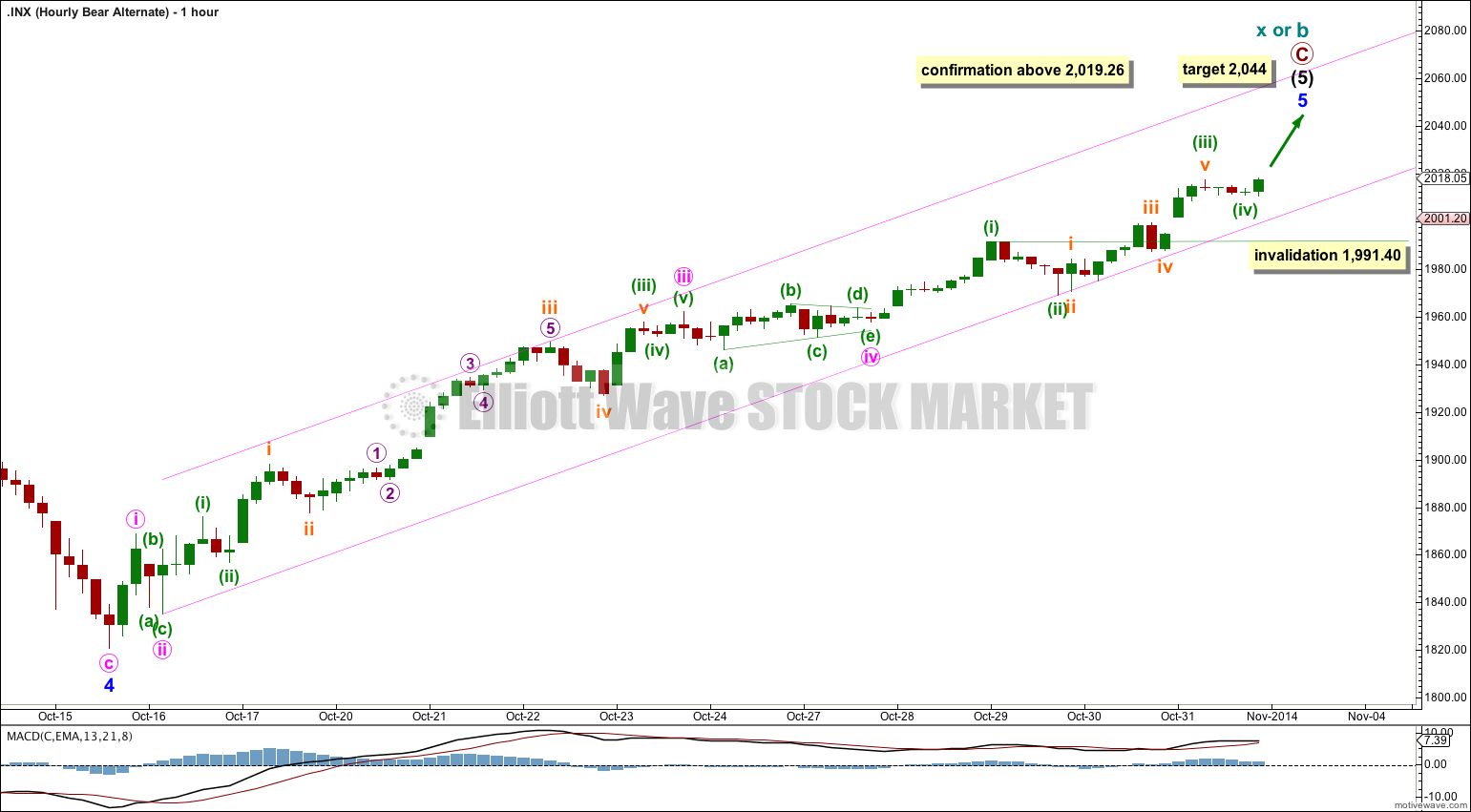
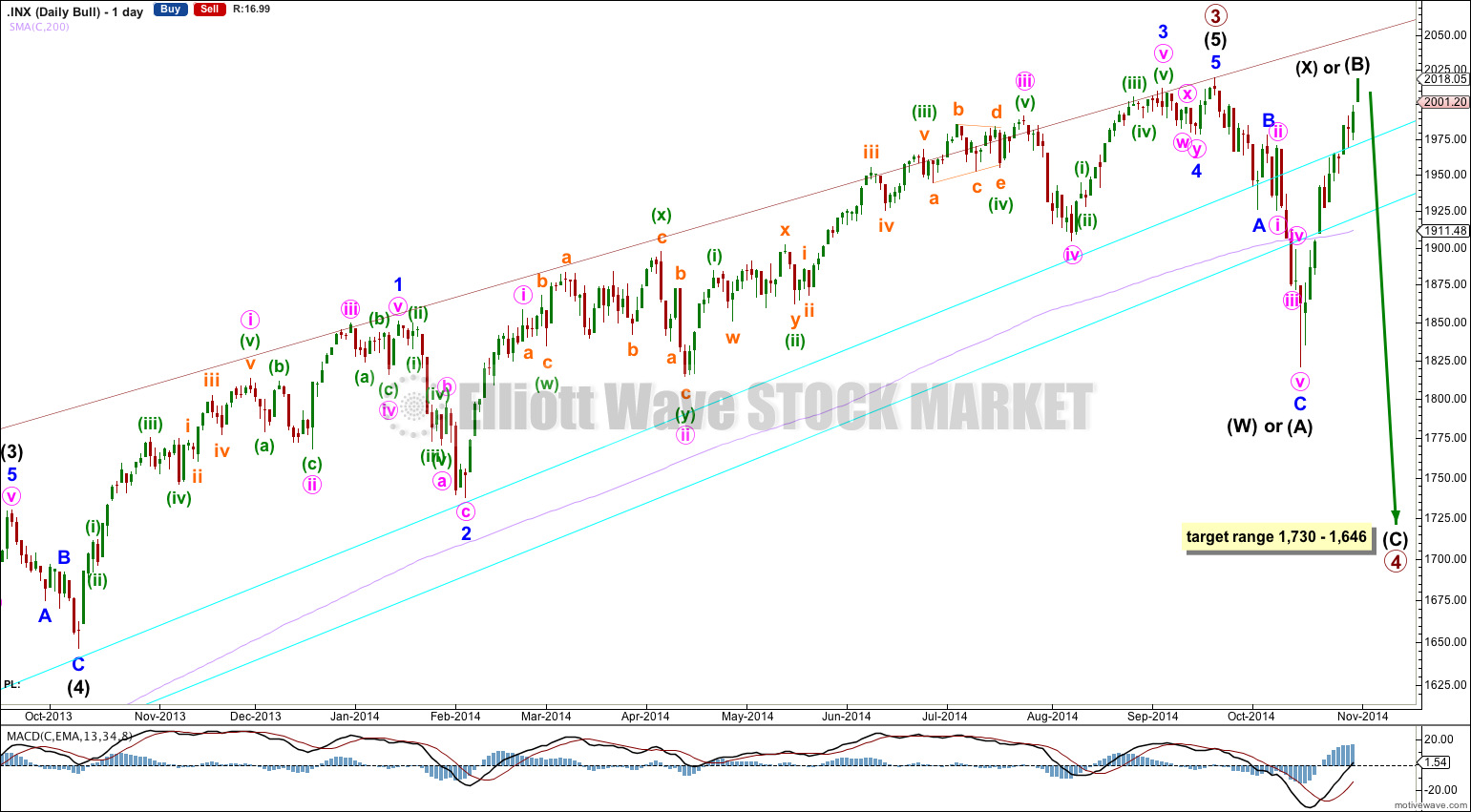
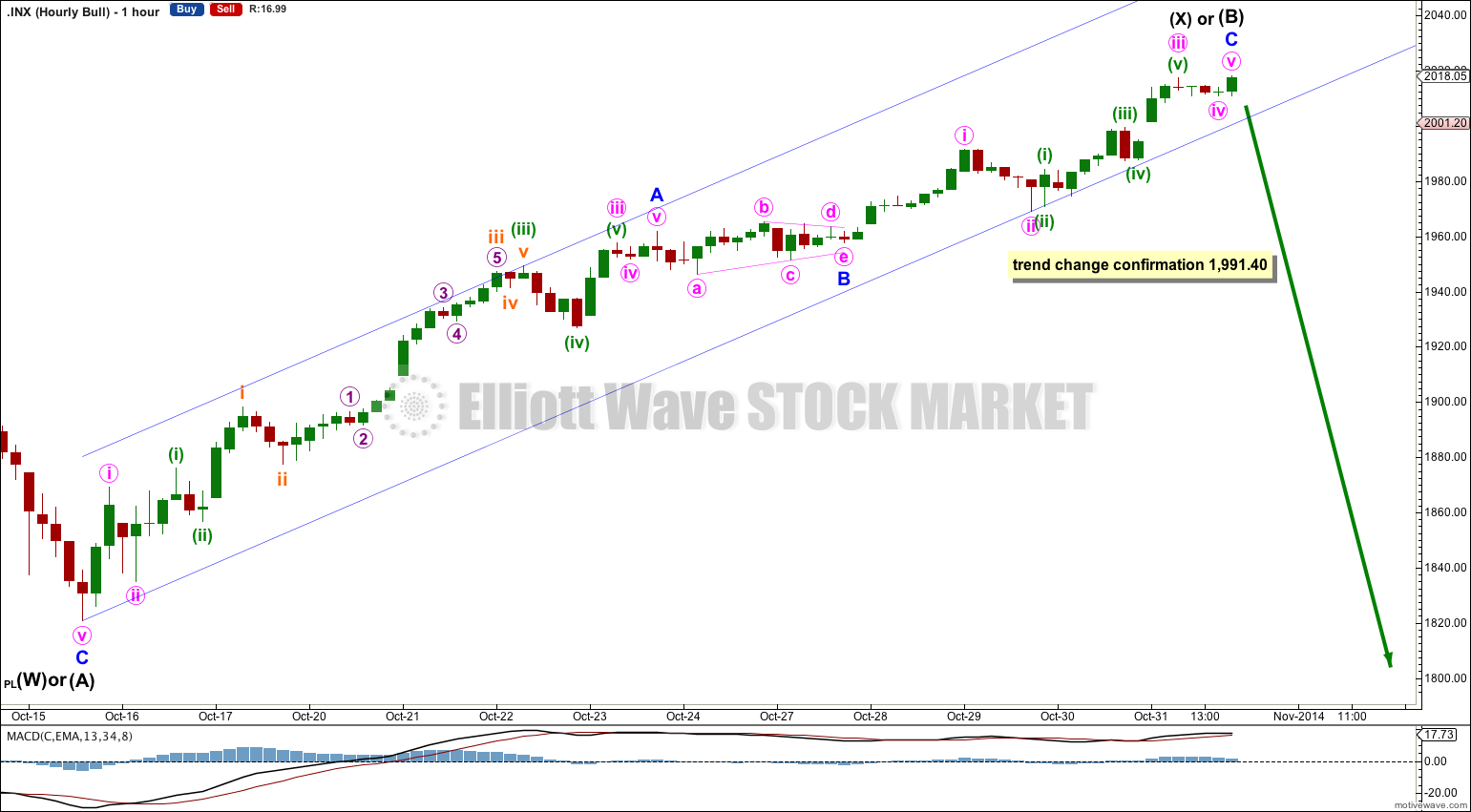
Hi Lara. This is a very thorough and concise analysis of the S&P 500. I really admire your unflinching calm in the face of so much volatility in the market. Where many so-called analysts have been proclaiming a bear market in the initial drop from 2019.16 towards 1820, they have been reduced to a whimper in the current upswing. Many have even been uncertain and refrained from further prognostication.
Going forward, if social mood is any indication, I have a feeling that crunch time will be the US elections on Tuesday. Many investors believe that the market is manipulated upwards to give an euphoric mood during the elections. When elections is over, there is no need for further prop. The immediate possibility will most likely be a market crash. This will mesh well with all your three scenarios. Your timing is also perfect. Keep up the good work!
I’m also noticing improved positivity in social mood here in NZ. The headlines in local news outlets are very positive, and the negatives are being downplayed even more.